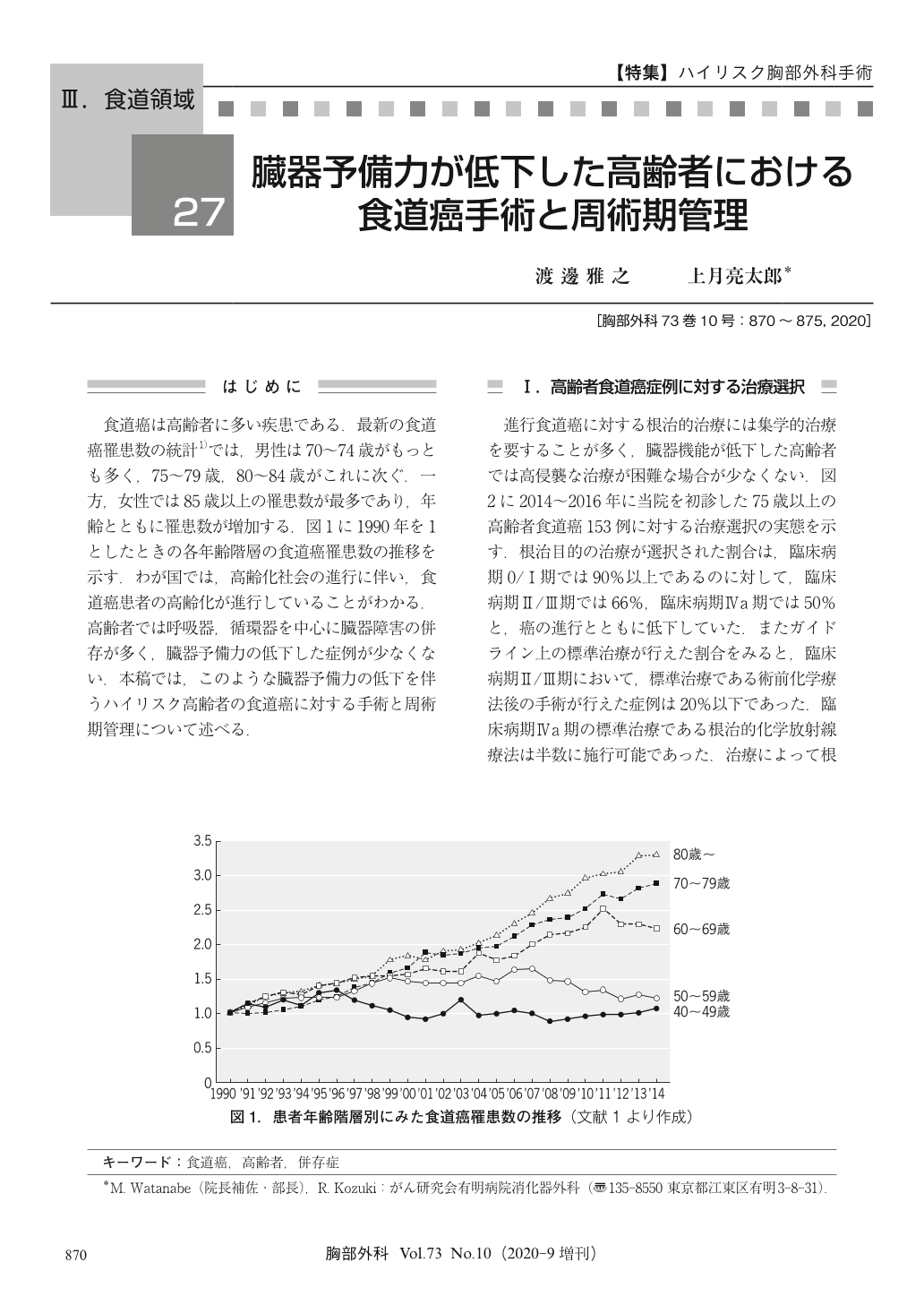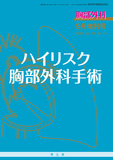Japanese
English
- 有料閲覧
- Abstract 文献概要
- 1ページ目 Look Inside
- 参考文献 Reference
食道癌は高齢者に多い疾患である.最新の食道癌罹患数の統計1)では,男性は70~74歳がもっとも多く,75~79歳,80~84歳がこれに次ぐ.一方,女性では85歳以上の罹患数が最多であり,年齢とともに罹患数が増加する.図1に1990年を1としたときの各年齢階層の食道癌罹患数の推移を示す.わが国では,高齢化社会の進行に伴い,食道癌患者の高齢化が進行していることがわかる.高齢者では呼吸器,循環器を中心に臓器障害の併存が多く,臓器予備力の低下した症例が少なくない.本稿では,このような臓器予備力の低下を伴うハイリスク高齢者の食道癌に対する手術と周術期管理について述べる.
According to the aging of society, elderly patients with esophageal cancer have been increasing in Japan. A multimodality treatment strategy is required to achieve long-term survival in patients with advanced-stage esophageal cancer. However, in elderly patients with impaired organ functions, the highly invasive treatment strategy is often difficult to be indicated. Esophagectomy remains the mainstay of treatment even in the elderly. Indication for esophagectomy in the elderly should be determined comprehensively, based on the physical status, life expectancy, tumor staging, and patients’ desires. To predict the risk of postoperative complications, some scoring systems, such as estimation of physiology ability and surgical stress (E-PASS) and controlling nutritional status (CONUT), and the risk calculator provided by the National Clinical Database in Japan should be appropriately used. For patients with impaired organ functions, surgical procedures to reduce the surgical invasiveness, such as 2-stage operation, transhiatal esophagectomy, and mediastinoscopic esophagectomy, should be considered as an alternative to conventional transthoracic esophagectomy and reconstruction. Depending on the situations, preservation of the bronchial artery, thoracic duct, and azygos arch should be considered. A care bundle by a multidisciplinary perioperative management team may decrease postoperative morbidity and mortality rates in elderly patients undergoing esophagectomy.

© Nankodo Co., Ltd., 2020


